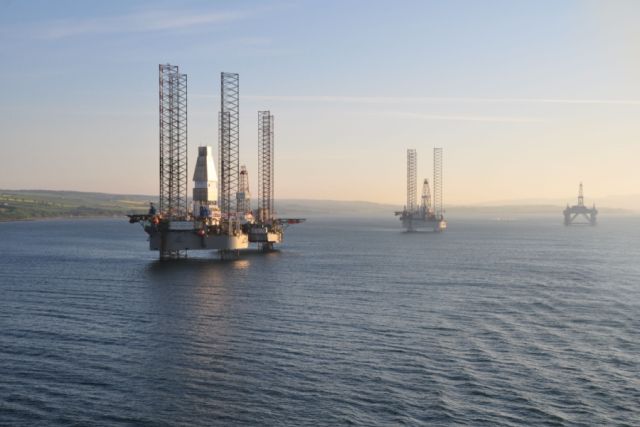
Oil rigs in the North sea off the coast of England and Scotland. (Source: Shutterstock.com)
The North Sea Transition Authority is investigating operators for blowing plug and abandonment (P&A) deadlines among operators on the U.K. Continental Shelf, which have caused forecast expenses to rise by billions of dollars.
Operators expect to spend about £24 billion (US$31.1 billion) on decommissioning between 2023 and 2032, a £3 billion (US$3.89 billion) increase compared to the same period last year, according to a July 16 NSTA report.
Repeated delays to P&A work, competition for rigs from overseas and cost pressures are pushing up the estimated bill for decommissioning on the UKCS, the authority said.
Hundreds of wells will need to be decommissioned every year as more oil and gas fields shut down. However, operators only achieved 70% of planned well decommissioning activities last year, NSTA reported.
“Some operators are deferring in hope that prices will go down in the coming years,” NSTA said. “However, failing to award [P&A] contracts reduces the supply chain’s revenues and ability to invest in capacity and resources.”
Pauline Innes, the NSTA’s supply chain and decommissioning director, wrote to licensees in November 2023 urging them to make headway on P&A and warned that failure to comply would bring consequences. That includes NSTA exploring the use of sanctions to bring operators online, the authority said on July 26.
The NSTA’s Directorate of Regulation has also “commenced investigations relating to alleged failures to complete timely plugging and abandonment in line with approved plans,” the authority said.
The authority is also spearheading a project to identify UKCS wells that will be ready for decommissioning between 2026 to 2030. The goal is to assess the supply chain capacity required and undertake work on time and cost effectively.
“With spending forecast to peak at £2.5bn per year in the current decade, decommissioning can ensure that the UK’s world-leading supply chain is equipped to help operators clean up their oil and gas infrastructure over the next 50 years and support the carbon storage sector, which will rely on many of the same resources,” Innes said.
Previous efforts by the industry to share information and produce robust planning helped lower estimated decommissioning costs by £15 billion between 2017 and 2022, NSTA said.
However, further improvements have been difficult to achieve as much of the “low-hanging fruit has been picked,” the authority said.
Recommended Reading
McKinsey: Big GHG Mitigation Opportunities for Upstream Sector
2024-11-22 - Consulting firm McKinsey & Co. says a cooperative effort of upstream oil and gas companies could reduce the world’s emissions by 4% by 2030.
Analysis: Middle Three Forks Bench Holds Vast Untapped Oil Potential
2025-01-07 - Williston Basin operators have mostly landed laterals in the shallower upper Three Forks bench. But the deeper middle Three Forks contains hundreds of millions of barrels of oil yet to be recovered, North Dakota state researchers report.
Northern’s O’Grady: Most of ‘Best’ Acres ‘Already Been Bought’
2024-10-24 - Adding new-well inventory going forward will require “exploration or other creative measures,” said Nick O’Grady, whose Northern Oil and Gas holds interests in 10,000 Lower 48 wells.
QatarEnergy Joins Joint Venture Offshore Namibia
2024-12-17 - QatarEnergy acquired a 27.5% stake in petroleum exploration license 90 offshore Namibia.
E&P Highlights: Nov. 25, 2024
2024-11-25 - Here’s a roundup of the latest E&P headlines, including North Sea production updates as well as major offshore contracts and a transfer of interests by Exxon in Suriname.
Comments
Add new comment
This conversation is moderated according to Hart Energy community rules. Please read the rules before joining the discussion. If you’re experiencing any technical problems, please contact our customer care team.





